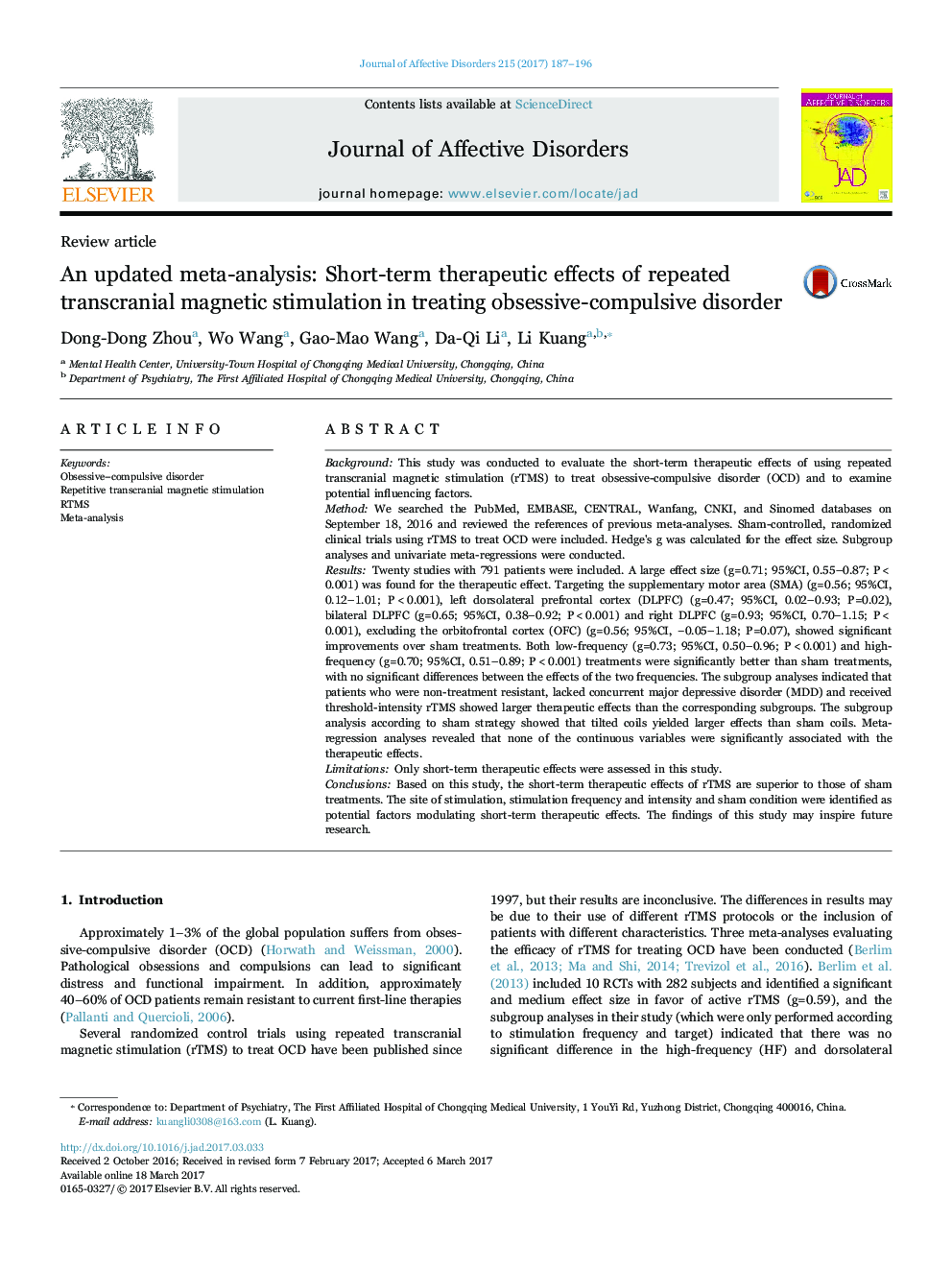| Article ID | Journal | Published Year | Pages | File Type |
|---|---|---|---|---|
| 5722344 | Journal of Affective Disorders | 2017 | 10 Pages |
â¢Targeting the right DLPFC seems produce larger therapeutic effects than targeting other regions;â¢Low frequency and high frequency rTMS produce similar and significant treatment effects.â¢Stimulation at 100% of the RMT appear to provide the best improvement.â¢Studies using tilted coils as control yielded significantly larger effects than sham coils.
BackgroundThis study was conducted to evaluate the short-term therapeutic effects of using repeated transcranial magnetic stimulation (rTMS) to treat obsessive-compulsive disorder (OCD) and to examine potential influencing factors.MethodWe searched the PubMed, EMBASE, CENTRAL, Wanfang, CNKI, and Sinomed databases on September 18, 2016 and reviewed the references of previous meta-analyses. Sham-controlled, randomized clinical trials using rTMS to treat OCD were included. Hedge's g was calculated for the effect size. Subgroup analyses and univariate meta-regressions were conducted.ResultsTwenty studies with 791 patients were included. A large effect size (g=0.71; 95%CI, 0.55-0.87; P<0.001) was found for the therapeutic effect. Targeting the supplementary motor area (SMA) (g=0.56; 95%CI, 0.12-1.01; P<0.001), left dorsolateral prefrontal cortex (DLPFC) (g=0.47; 95%CI, 0.02-0.93; P=0.02), bilateral DLPFC (g=0.65; 95%CI, 0.38-0.92; P<0.001) and right DLPFC (g=0.93; 95%CI, 0.70-1.15; P<0.001), excluding the orbitofrontal cortex (OFC) (g=0.56; 95%CI, â0.05-1.18; P=0.07), showed significant improvements over sham treatments. Both low-frequency (g=0.73; 95%CI, 0.50-0.96; P<0.001) and high-frequency (g=0.70; 95%CI, 0.51-0.89; P<0.001) treatments were significantly better than sham treatments, with no significant differences between the effects of the two frequencies. The subgroup analyses indicated that patients who were non-treatment resistant, lacked concurrent major depressive disorder (MDD) and received threshold-intensity rTMS showed larger therapeutic effects than the corresponding subgroups. The subgroup analysis according to sham strategy showed that tilted coils yielded larger effects than sham coils. Meta-regression analyses revealed that none of the continuous variables were significantly associated with the therapeutic effects.LimitationsOnly short-term therapeutic effects were assessed in this study.ConclusionsBased on this study, the short-term therapeutic effects of rTMS are superior to those of sham treatments. The site of stimulation, stimulation frequency and intensity and sham condition were identified as potential factors modulating short-term therapeutic effects. The findings of this study may inspire future research.
